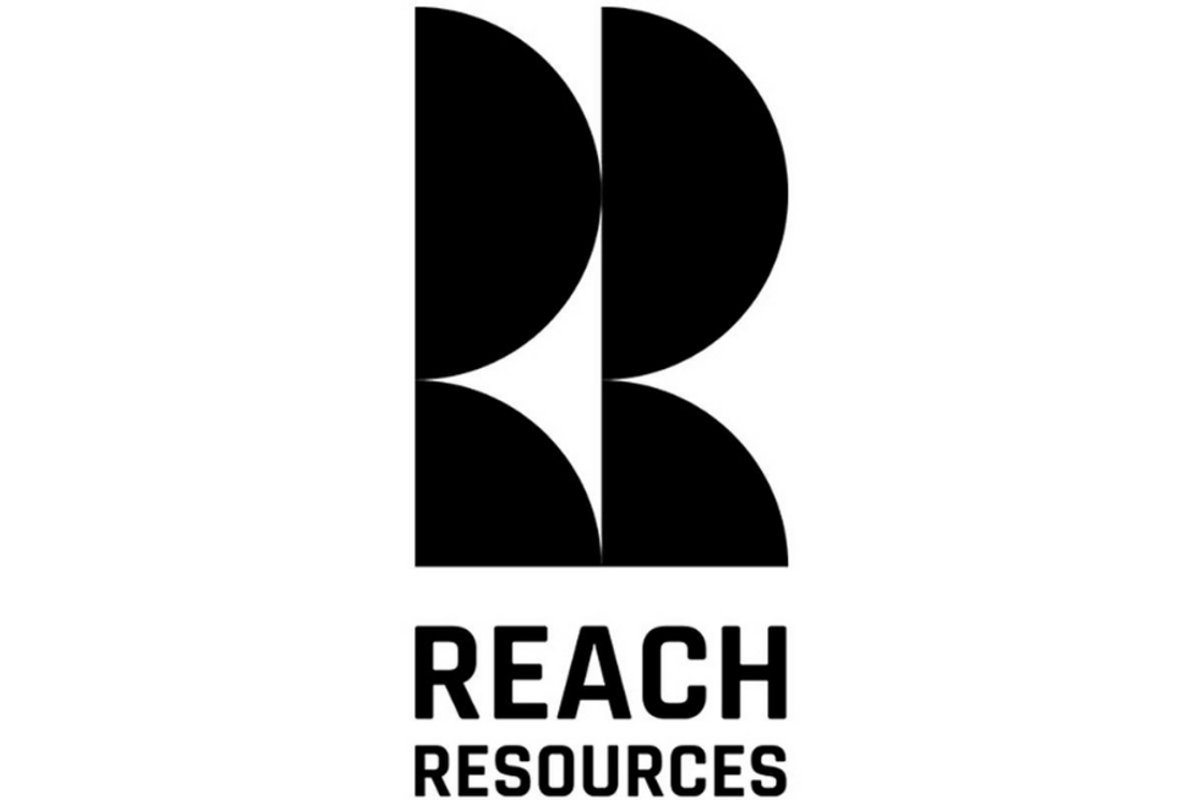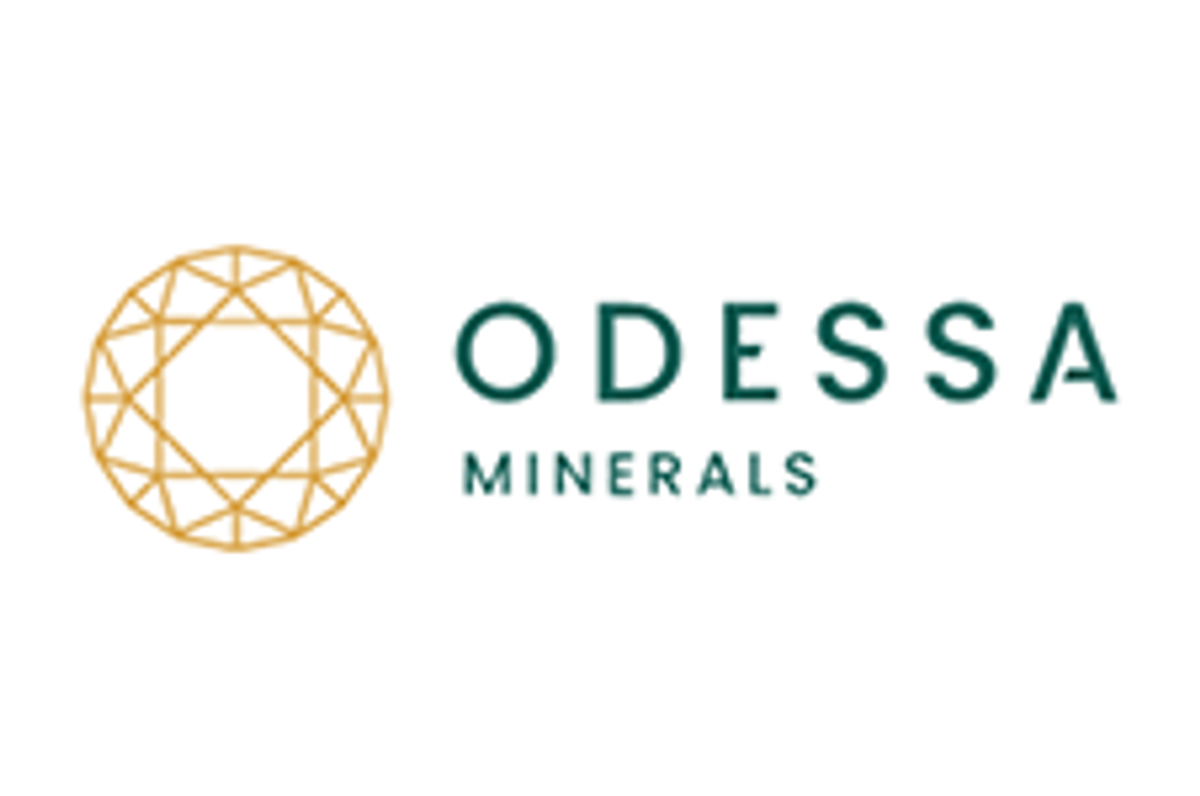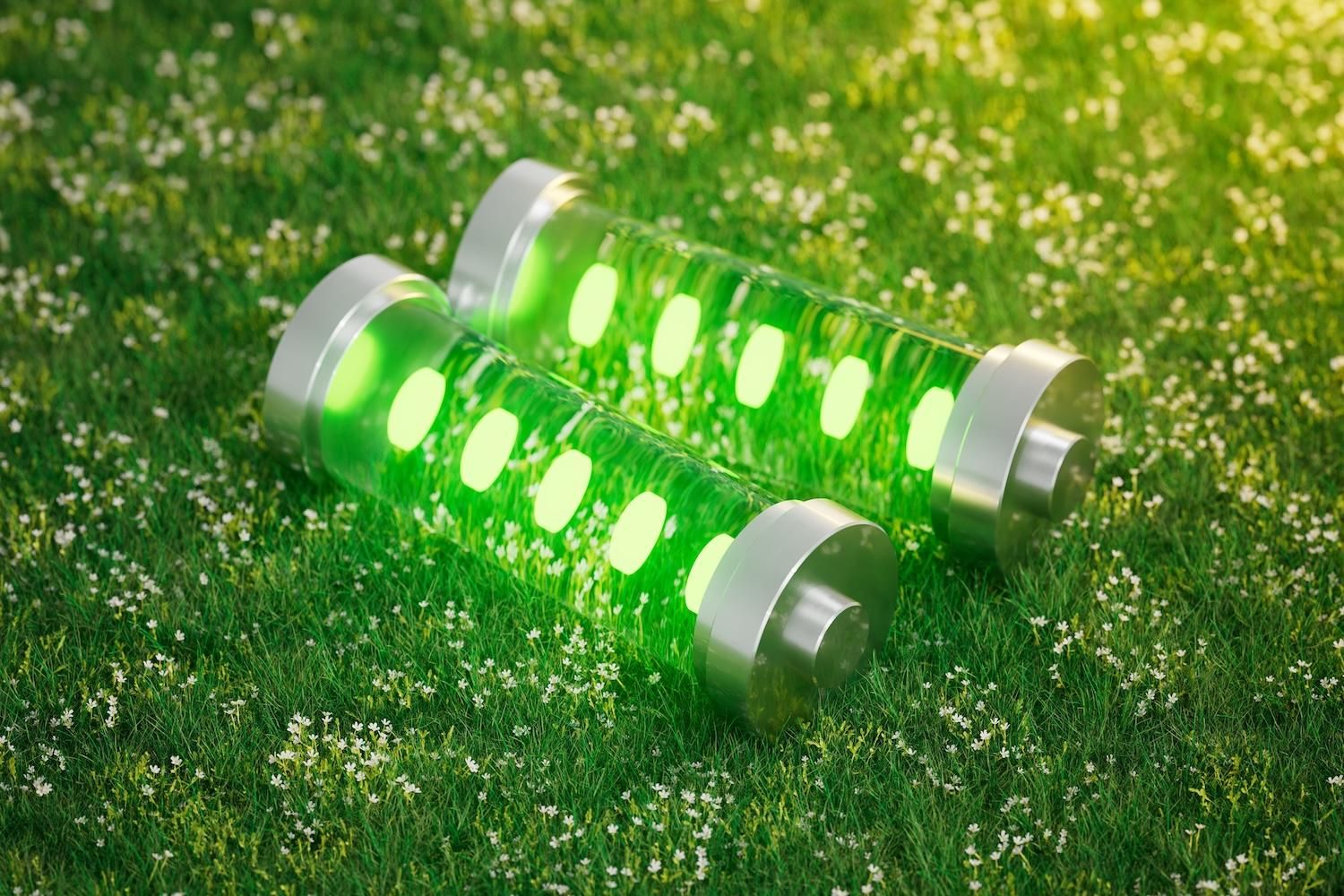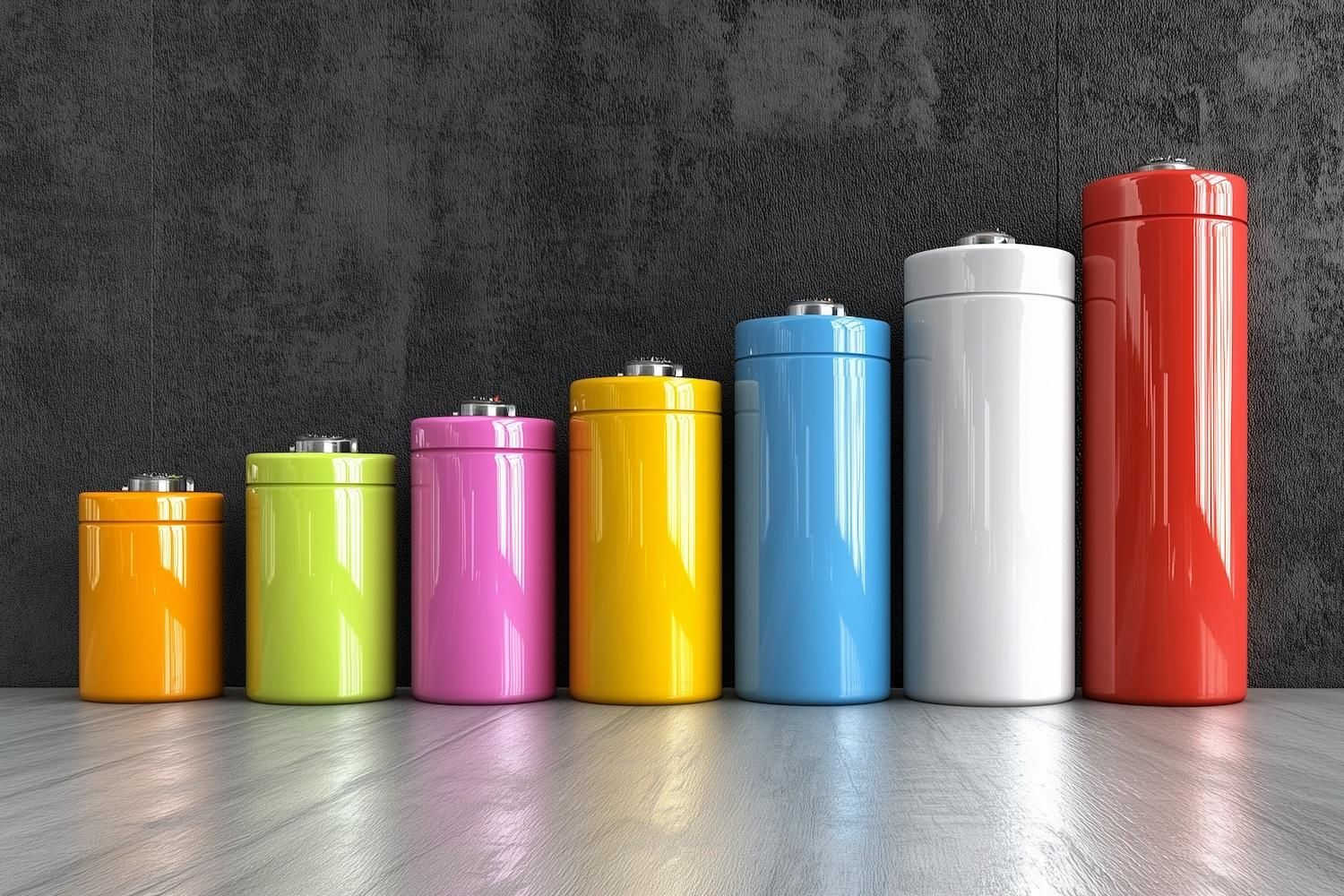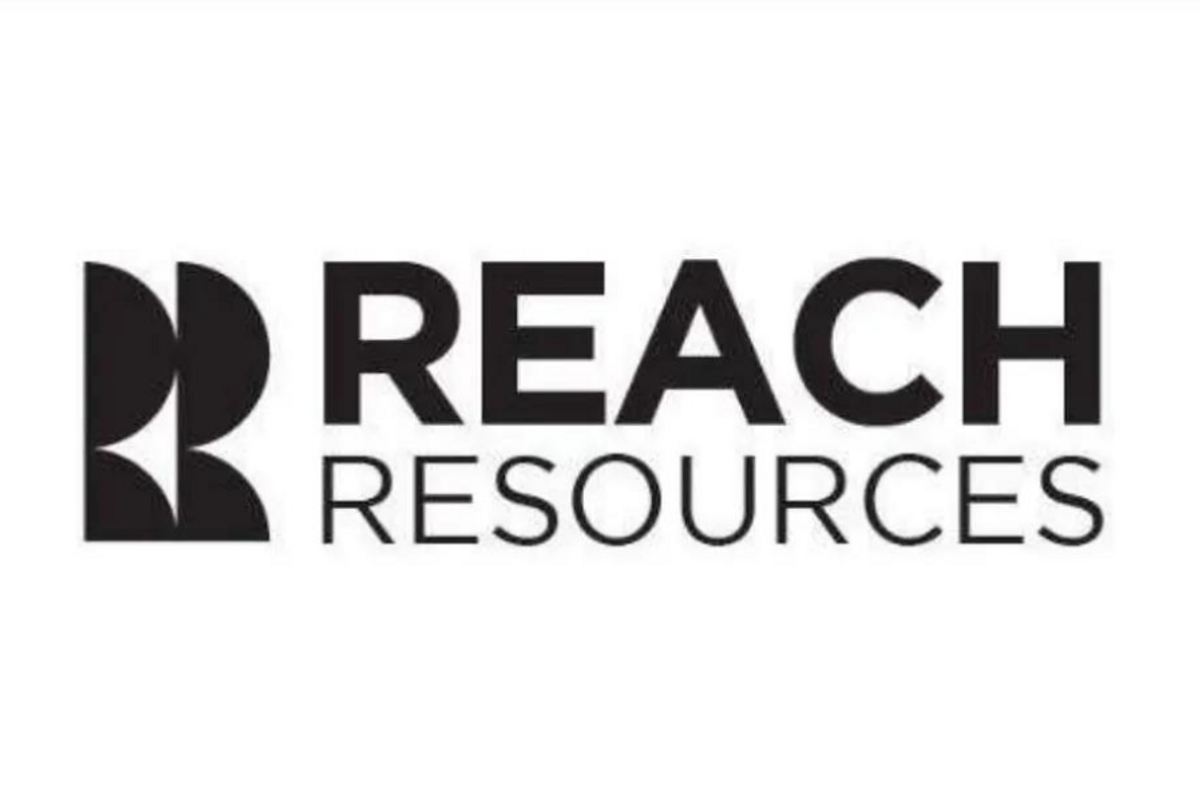
June 11, 2024
Reach Resources Limited (ASX: RR1 & RR1O) (“Reach” or “the Company”) is pleased to advise that assay results from the latest field program at Wabli Creek have identified a primary source of high grade Nb/REE mineralisation previously only found in surface eluvial samples on site (Figure 2).
HIGHLIGHTS
- In-situ or bedrock source of high-grade Niobium (Nb) and Rare Earth Elements (REE) has been discovered during the latest program of rock chip sampling at Wabli Creek, Gascoyne, W.A.
- The recently identified ovoid late-stage intrusive feature (ASX Announcement 28 May 2024) is considered the likely parental source of the Nb-Y-Ta-Ti-REE enriched pegmatites at Wabli Creek. Further, geochemistry indicates that a carbonatite association cannot be ruled out in addition to the pegmatites.
- This ovoid intrusive feature is younger than the surrounding country rock, with a diameter in excess of 3km’s and a circumference greater than 8km’s.
- Granitic pegmatite is now confirmed as a primary source of mineralisation with in-situ assay results including:
- 17.65% Nb2O5, 0.15% Y2O3, 10.81% Ta2O5, 31.39% TiO2, 0.37% TREO (24WRCK049)
- 13.22% Nb2O5, 0.13% Y2O3, 6.27% Ta2O5, 18.97% TiO2, 1.13% TREO (24WRCK046)
- These outstanding results have been chipped straight off bedrock (in-situ) and hold similar concentrations to the previously reported high grade weathered surface material (eluvial samples previously reported 32% Nb2O5 and 2.57% TREO -ASX Announcement 21 December 2023). Importantly, the in-situ assay results taken straight from the bedrock were taken approximately 0.5km from the historically reported 32% Nb2O5.
- The majority of the ovoid intrusive feature most prospective for Nb-Y-Ti-REE mineralisation (the margin zone), is poorly exposed and remains under-explored.
- Detailed airborne magnetic and radiometric surveys recently acquired are currently being interpreted by Southern Geoscience to identify and refine key priority targets for further exploration.
- The Company is actively progressing its heritage discussions with the Native Title custodians of the land and will return to site for additional sampling in the short term.
Most importantly, these latest high-grade assay results (17.65% Nb2O5 and 13.22% Nb2O5) confirm that the hard rock source material holds the same or similar high-grade concentrations as the weathered surface material (eluvial material), previously reported by the Company (32% Nb2O5 and 2.57% TREO - ASX Announcement 21 December 2023). Further, the in-situ samples have been chipped straight off the bedrock (in-situ) approximately 0.5km from the previously reported sample returning 32% Nb2O5.
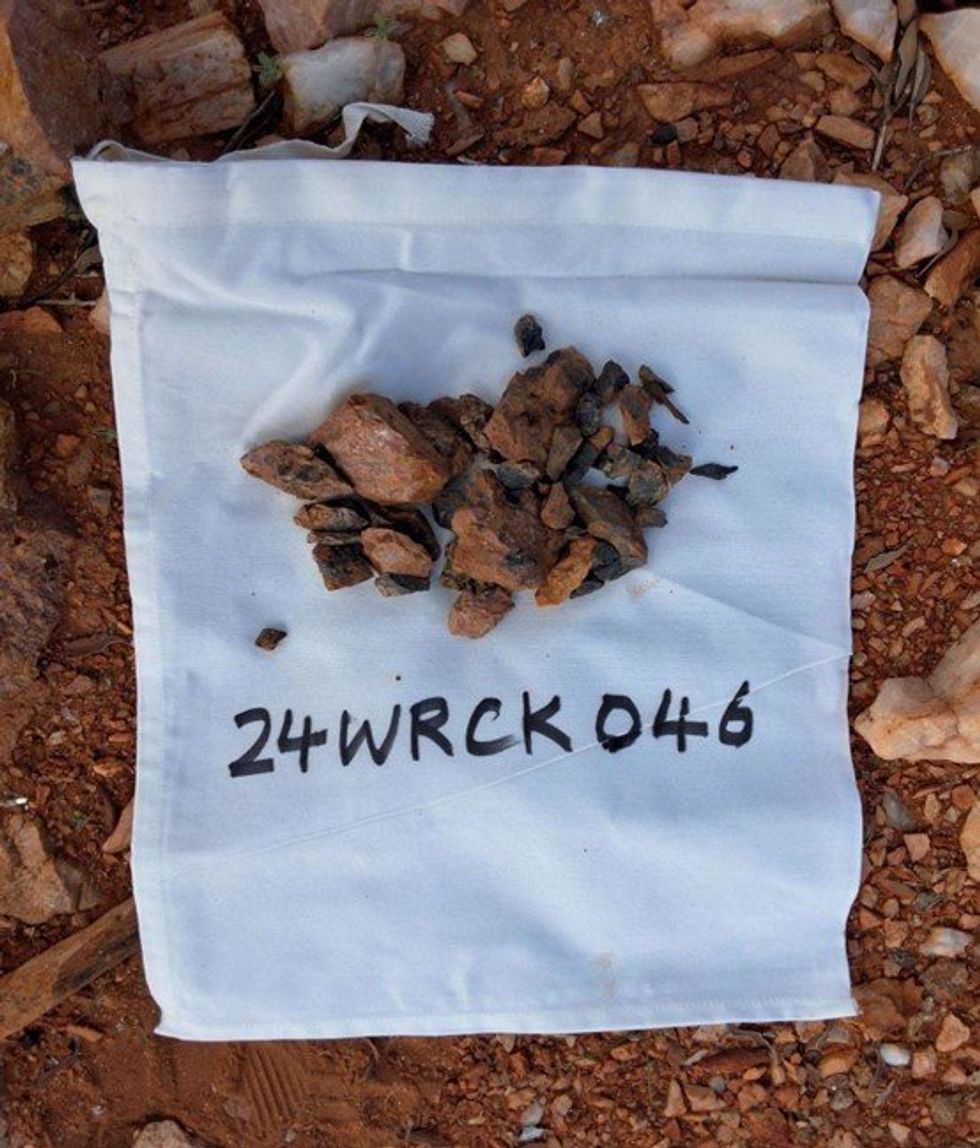
Located in the highly prospective Gascoyne Province of Western Australia, approximately 150km north of Gascoyne Junction, the Wabli Creek project has previously reported high grade niobium and TREO eluvial results up to 32% Nb2O5 and 2.57% TREO (ASX Announcement 21 December 2023).
These latest in-situ results, in addition to the large ovoid intrusive feature (ASX Announcement 28 May 2024), provide a fundamental change in the prospectivity at Wabli Creek.
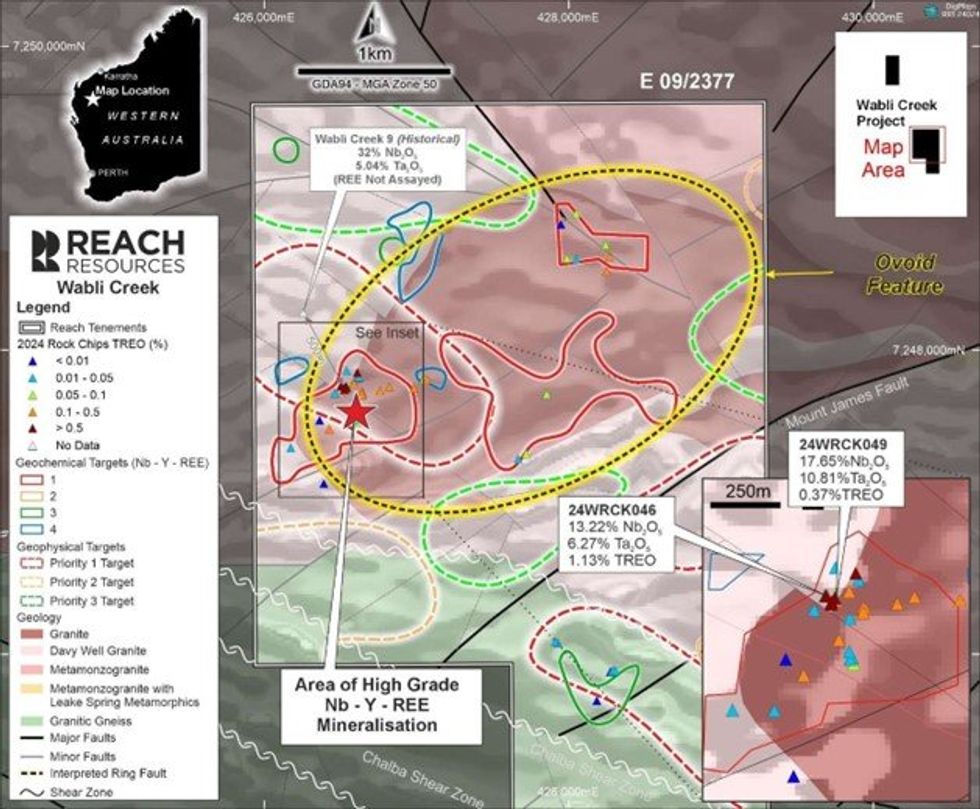
During the Company’s current program, a total of 49 rock chip samples were taken from Wabli Creek (E09/2377), during May 2024. Sampling was focused on the Priority 1 geochemical targets outlined by Sugden Geoscience (ASX Announcement 21 December 2023).
Click here for the full ASX Release
This article includes content from Reach Resources, licensed for the purpose of publishing on Investing News Australia. This article does not constitute financial product advice. It is your responsibility to perform proper due diligence before acting upon any information provided here. Please refer to our full disclaimer here.
RR1:AU
The Conversation (0)
03 May 2022
Reach Resources Limited
Sourcing the Critical Minerals of the Future
Sourcing the Critical Minerals of the Future Keep Reading...
13 May
Murchison South Increases to 67koz Gold Across Two Pits
Reach Resources Limited (ASX: RR1 & RR1O) (“Reach” or “the Company”) is pleased to announce the completion of a new Mineral Resource Estimate (MRE) for the Pansy Pit deposit at its Murchison South Gold Project. The estimate, prepared by independent consultants Mining Plus, reported above a... Keep Reading...
28 July 2023
Quarterly Activities/Appendix 5B Cash Flow Report
Reach Resources Limited (ASX: RR1) (“Reach” or “the Company”) provides its activities report for the quarter ended 30 June 2023. HIGHLIGHTS High-Grade Lithium Results at Yinnetharra (15 May 2023) Lithium mineralisation confirmed with rock chip samples reporting highly encouraging assays of up to... Keep Reading...
18 May 2023
Outcropping Copper Gossan Delivers 33% Cu Assays At Morrissey Hill Project, Yinnetharra
Reach Resources Limited (ASX: RR1 & RR1O) (“Reach” or “the Company”) is pleased to announce that it has received high grade copper, gold and silver results up to 33% copper, 0.2g/t gold and 142g/t silver from its recently completed rock chip sampling program at the Company’s Morrissey Hill... Keep Reading...
14 May 2023
Reach Resources’ Strategic Position Between Two of WA’s Mining Heavyweights
Reach Resources’ (ASX:RR1) strategic position with its Morrissey Hill project has placed the critical mineral explorer on the radar of two of Western Australia’s mining giants Delta Lithium (ASX:DLI) and Minerals 260 (ASX:MI6), according to an article published in The West Australian.“While... Keep Reading...
05 December
Livium Receives A$663k in RsD Tax Incentive Rebates for VSPC
Livium Ltd (ASX: LIT) (“Livium” or the “Company”) advises that it has received A$663,000 in research and development ("R&D") tax incentive rebates from the Australian Tax Office for the 2025 financial year ("FY25"), relating to its wholly owned subsidiary VSPC Pty Limited ("VSPC"). The rebate... Keep Reading...
01 December
Why SQM Says Social Dialogue is Key to Sustainable Lithium
As scrutiny continues to intensify across the battery metals supply chain, the conversation around sustainability has moved far beyond carbon footprints. At this year’s Benchmark Week, Stefan Debruyne, director of external affairs at Sociedad Quimica y Minera de Chile (SQM) (NYSE:SQM), made that... Keep Reading...
27 November
Battery Storage Market Surging as Electricity Demand Enters New Era
Speaking at Benchmark Week, Iola Hughes, head of battery research at Benchmark Mineral Intelligence, outlined a market that is undergoing “very strong growth" and becoming indispensable to energy security.Hughes described energy storage as the fastest-growing segment in the battery sector today.... Keep Reading...
27 November
Inside Billionaire Gina Rinehart's Key Mining Investments
Australian billionaire Gina Rinehart has become a formidable force in the global mining industry. After taking the helm of her father’s iron ore firm Hancock Prospecting in 1993, she embarked upon a diversification strategy that has vastly expanded her resource empire. Now Australia’s richest... Keep Reading...
26 November
Long State Funding Update
Atlantic Lithium (A11:AU) has announced Long State Funding UpdateDownload the PDF here. Keep Reading...
24 November
CATL Reportedly Plans to Restart Key Chinese Lithium Mine by December
Contemporary Amperex Technology (SZSE:300750,OTC Pink:CTATF) is preparing to restart its Jianxiawo lithium mine in Jiangxi province as soon as early December, sources familiar with the matter told Bloomberg.The sources, who declined to be named, said the company, better known as CATL, has asked... Keep Reading...
Latest News
Latest Press Releases
Related News
TOP STOCKS
American Battery4.030.24
Aion Therapeutic0.10-0.01
Cybin Corp2.140.00
